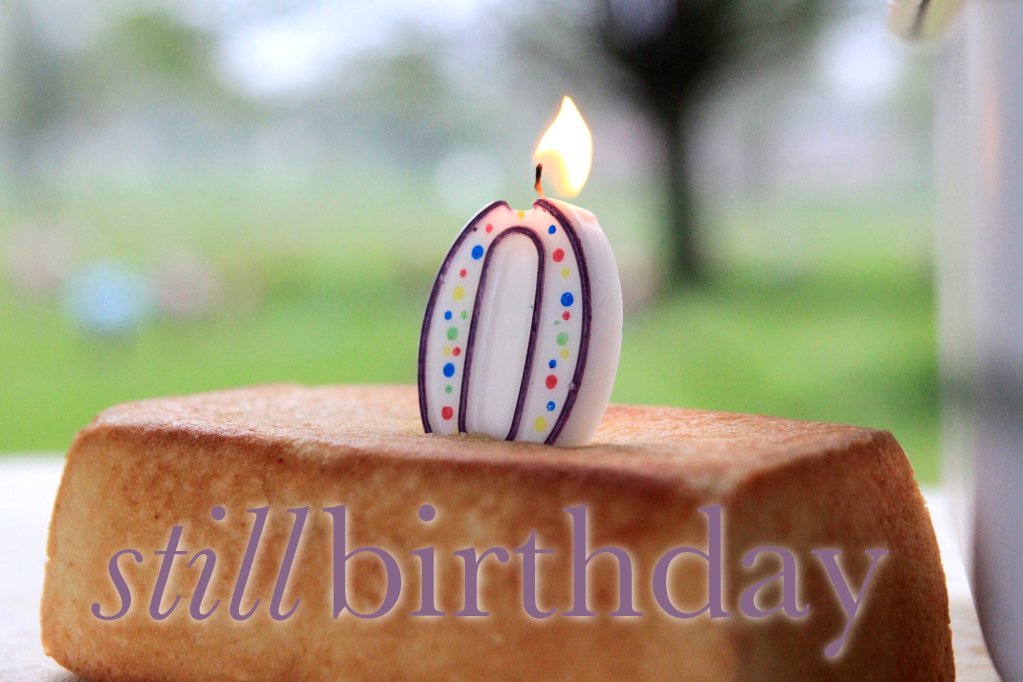As an SBD Doula, receiving the notification that you are needed for a family can bring a lot of feelings. You’ve studied, engaged and researched for two extremely intensive months. But now you are walking into that space, and you may be feeling the weight of the importance to do so with reverence and preparation. Here is a simple list of just some real practical things you might make sure you have and know.
This article is a link just for SBD Doulas, but add it to the public how to doula in bereavement and
you’ll have some great resources and a great approach to serving families.
Birth Doula Bag:
- birth ball if the location doesn’t have one
- rebozo
- lotions/oils (both scented and unscented, easily absorbable)
- thermos of hot water (hospital sink can take too long to get hot water for compresses)
- small clips for unruly curtains in hospital room
- small clips for unruly sweaty hair in labor for mom
- battery operated candles
- candle warmer or oil warmer
- lip balm for mom
- small battery operated or paper fan
- honey sticks
- raspberry tea packages, graham crackers for light snacking for mom
- birthing music as an option
- camera
- notepad for milestones in labor
Bereavement Doula Bag:
{later in pregnancy}
for baby:
- clay moldings
- ink pads
- ink print paper / cardstock / Bible or other special pages
- placenta print paper
- birth certificate
- scented baby bath
- anointing oil
- small ziplock bags (both jewelry and lunch sized)
- appropriately sized hat, outfit and/or blanket
- bag for parents to collect all items from the birth space that they can keep*
Location should have: basin, wash cloth, small scissors, chux pads, Vaseline, ice cubes
for mom:
- breastmilk promotion tea
- breastmilk cessation tea
- cloth nursing pads
- bottle/bags to catch droplets of milk
- birthing gown as an option
- sturdy tissues / cloth kerchief
for family:
- dad booklet
- coloring book, bubbles, play doh for siblings
- photos that include family
- professional photographer on call (notify again when mom reaches transition stage)
- all bereavement support items in keepsake bag to leave with family
for medical staff:
- our Doulas & Chaplains page has a fantastic PDF file for you to print and bring in a folder with you. Introduce yourself as a novice birth & bereavement doula willing to bring all the love you can while still becoming professionally trained.
{earlier in pregnancy}
- any of the items above as they apply
- fruit strainer, cheese cloth or fish net
- cloth pad to catch some blood for farewell options as family chooses
- tin foil, clear cup, saline solution, tweezers, magnifying glass
- ziplock for broken bits of placenta, as needed for inspection or for use in farewell
- darker container to put the ziplock, glass or plastic container into
- cottonroot bark or other essential oils or tinctures approved by care provider and family
- heavy pads for the duration of catching lochia
Location should have: manual toilet (not automatic flush), plenty of towels, access to 911 as needed
as doula:
- *remember that you’ll be leaving the larger keepsake collecting bag with the family, so have a double bag or other plan for your own things
- peppermint oil or gum as your first birth can cause such a flood of hormones for you. If you feel your temperature changing dramatically (very hot) and weak, please excuse yourself for a drink of cool water and a sit. If you find yourself nauseous, vomiting or with diarrhea, handle the moment with as much quiet discretion as possible.
- phone or camera charger, cords
- relatively odorless and quiet snacks or loose change (trail mix is wonderful)
- dress for the changes of temperature in room (wearing a short sleeved shirt, packing a cardigan, can be a good choice)
- small items for your own refreshment (toothbrush, facial crème, a dab of rouge to brighten your face after long hours can refresh your esteem)
- consider the specifics that you know of in regard to this birth. For example, if transfer of care is a possibility, know weather-safe routes.
- after you have gathered your supplies, consider how they look and if the presentation can be made even more special or beautiful.
notes for yourself:
- Doula’s memory loss is not uncommon. Your full attention is devoted to the family, even when you feel the most calm and collected. This is a good thing, so just prepare for it. Phone numbers, names and websites on a quick note list is helpful. Quick access to your own website and community project, as well as jotting these numbers into your journal can be helpful (in case internet access is choppy).
training information
- medical options for birth is chapter 3
- n0n-medical options for birth is chapter 4
- NICU is chapter 5
- lactation is chapter 6
- student resources
- SBD link to During Birth resources
- SBD link to Birth Education resources (augmentation, postpartum, lactation, etc.)
- NICU & Farewell Resources by location (as well as your state/location fb team)
- how to doula in bereavement
- what an SBD doula has learned and can do (published on your SBD url)
- SBD principles of service
Remember we also have the Immediate Decisions handbook and the doula handbook (consider shipping times)
Quick Notes
Slow Down, Validate, Provide Options & Supplement Resources
First Contact: Before Labor
- One important factor to make sure you’ve explained to the family if you have contact with them prior to birth is the temptation either of them may have to shut you out. They both may very much be in need of your support, but because your presence may link, understandably so, to the death of their baby in their minds, it is not uncommon for dad especially to encourage mom that you aren’t needed or to limit contact. It is important to address that there are many, many moments through this journey where running from the pain may feel like the best and even healthiest thing to do, but in comparing these moments to the actual labor, mom will need to move into this exact space she may want to run from. That going slow, moving into this space is precisely where the healthiest healing happens – and that numerous families before them, as well as some research (as outlined in our training and in the birth plan section) points to this truth – that expressive pain now is often linked to the most expressive healing later. Discuss making sure that mom has full access to you including specifically to unpack some of this with you over the phone if it comes up between your visits. Also provide options and supplement resources even at this point.
- If phone contact is all you have, leaving a voice message is better than hanging up before the recording. What will you say? Be authentic. It is entirely OK to be vulnerable, to say, “I have some resources and I have support I’d be honored to offer you. I am so sorry for what you are facing, but I would be honored to walk this with you. Please call me. I will call back again in ___ hours.” The parents may likely save your voicemail message and play it back when through their grief journey, as validation that someone cared for them in those earliest moments.
Labor
- If you are meeting family for the first time in labor, give eye contact to both parents first, say hello, then quietly find a place to put your things down. Move closer toward the family with reverence and dignity. Often the eye contact in this first encounter speaks volumes. Evaluate the situation for the first touch – a hand on mom’s knee or back. Introduce yourself simply, and then invite the family to share. This can truly be as simple as “Tell me.” Ask a couple of questions to both parents. When they have shared what is first on their heart, let them know that you are a doula, who supports for birth, and that you can support during birth. Speak simply that there are some things that might feel different in this labor and birth and that you are here to guide them through this journey.
- Performance Anxiety and Emotional Dystocia are common. Speaking into these things with validation is important.
- In all labor, as it intensifies, wanting to “run from this place” – to want to close up at the source of contractions is possible. Using a warm compress or effleurage on her lower abdomen, or, during an exam, reminding mom that she will need to “go to this place” can be a support through dystocia. This is also a helpful tool for the bereaved dad later who may want to start to shut things down and close up.
- Remind mom she is a mom in labor.
- Ask both parents about their diversity of beliefs regarding birth, newborn, and farewell, including rituals, behaviors, and decisions.
- The work of moving the cervix up and out of the way, coupled with the work of the baby moving downward can be especially painful and difficult. Speak about and choose alternating positions that are especially intentional about helping with this work. “We are being intentional in this labor, mindfully moving the cervix up and out of the way, and working to bring baby down.” Manual support for the cervix can help – pushing into an exam is one possible option.
- If medical or additional support is needed for the birth, remind mom that this is simply the labor that she needs, that she is still a mom in labor and still a mom having a baby.
- The birth provider will likely orchestrate the conversation about the farewell options, and may present this conversation during labor. Knowing your resources can help this conversation by providing the best resources possible. This understandably can be jarring to the parents. Slow this down by reminding the parents that first, right now, she is a mom in labor, and first, we are going to meet this baby.
- Don’t suggest hair clipping before you know the baby has hair.
- The most substantial dystocia or wailing from mom might be seen near or during pushing.
- Mom may be feeling the strongest desire for labor to be over just before birth. This is an important time to pause, and speak out loud about the full life of the baby, as these are the most final moments of this pregnancy. Either in conversation or in brief overview, mention the pregnancy test, the kicking, the gender reveal, things like that, to give mom a full swoop of memories of the personhood of this baby. This is important in the longterm bereavement journey to imprint a full awareness rather than regret for wishing it over – because wishing it over isn’t something she at all needs to feel guilty about.
- The pushing and birth may be manual, long, and difficult. The provider will be careful but may be forceful. This can stop feeling like a birth and mom can feel traumatized with images and thoughts of her baby not alive. Speaking in terms of birth can bring her back into the awareness of giving birth – contractions, positions, crowning, inviting mom to touch baby, etc.
The Welcoming
- Photos with additional family should be taken along the “sooner” side of things.
- Baby can be given directly to mom’s chest in skin to skin.
- Baby can be weighed and measured and time of birth noted. Photos can be taken of these things.
- Both parents can hold baby. You should not ask to hold baby until both parents have held him or spoken their feeling about their holding him.
- You can imprint these moments by speaking about the baby – fingers, ears, etc.
- Holding the baby cradled horizontally as much as possible rather than upward (not propped on a person’s shoulder in a burping position or in a sitting position, for example), can help alleviate issues of baby’s blood pooling or seeping.
- Clay imprints are best first before ink. Photos of baby’s feet and hands should be taken both before and after.
- The baby’s physical form may change rapidly. Using ice in lunch bags around the abdominal area in particular can help once you see the baby’s physical form turning especially limber and weak. The need for ice may be present before or after bath, but often begins at about 2 hours after birth.
- Bath time can feel scary for the parents. Doing this right on mom’s bed is best, because it places mom in a secure location and dad can sit next to her. Bath time is the most direct contact parents will have in a way that is most expressive of the physical condition of baby – skin slippage, feeling like they may lose their grip, seeing that their holding him may be impacting his physical form, all can happen. Guide the parents in keeping many hands on the baby as this will displace the weight and help with security. Baby should always remain low to a steady surface such as the bed to minimize risk of dropping and dramatically changing the physical form of the baby. Remind parents that this is not a bath to clean him, but a time to speak to baby in water, to be connected, as the flood of feelings will come at this time.
- After skin-to-skin and after the bath, once ice packs are used, wrapping or swaddling the abdomen area in particular with a baby blanket can keep the bags in place and allow the parents to still have a normalizing tactile experience by touching the baby blanket. You can leave the baby’s arms unwrapped so the parents can touch the baby’s fingers.
- The more normalizing of the baby’s reality and life during this time may very likely increase the dad’s concern and you may see his moving to shut things down and close up. Reminding them of the messages you’ve imprinted during birth – “You may want to run from this place, because it is painful, but this is the place to go to, just for right now.”
- The ways in which this baby impacts you emotionally are valuable. In the space where birth & bereavement meet, sometimes there is more a sense of one over the other. It is entirely OK to draw out moments in the labor that make the couple laugh. It is entirely OK to sing to their baby, coo, rock, gently pat the baby’s bottom, and yes, it absolutely can be OK to kiss their baby. It can be a very poignant message to let these parents know that their baby matters and impacts you. If you are feeling, though, that in these moments you are being thrust into your own chasm, for any reason, it is good and OK to step out, get a drink of cool water, speak love to yourself that this moment is giving you healing that you need, and that babies matter, and that you matter, and that these parents matter. If you have a smart phone, you might use this moment to contact your SBD State Representative for a brief private mentoring word of encouragement.
- It is extremely important to honor both parents. If dad is beginning to shut things down, it is important to give permission to this even if you wish it weren’t so. Thank him for the ways in which he “goes to this place even when he doesn’t want to.”
Letting Go: The Decision
- It is important for the parents to have alone time with baby, but it may feel entirely impossible to know how to do this. Do you tell them you’re stepping out? It will depend on the dynamic of the situation and it will depend on how long you’ve been at the birth. If you have been present through the labor, it is important to decide if you will be present during the departure – when baby is given to the care provider designated for funeral or cremation.
- There can actually be a danger to your being present during the departure, if you have been present during the majority of the labor. The departure is one of the hardest parts of the entire process for both parents, and your presence can soften this in the short term, and for that there is real benefit to the parents. However, this can also momentarily suppress their feelings, and delay their imprint of the departure. With your presence there, they may respond as if a part of their baby is still there – they may embrace you tightly and some of their feelings may inadvertently close. When they are discharged from the birth location and get into their car, for example – with the car seat in place and no baby inside – this can bring a heightened experience of departure than already is, and can create an unsafe driving experience.
- Combining the aspects of the situation – dad beginning to want to shut things down, mom doing things that speak to the life of baby that dad is feeling disturbed by, such as bathing, diapering or clothing baby – it is time to determine the best way for your leaving the setting. Rather than you giving a space for them alone and then coming back in, you will need to begin to decide if moving into the farewell and your ending your services for the session is best. This is in part because when you leave, dad will resume leadership.
- Once it becomes apparent that you are in this stretch of the journey, your decision about whether you stay or leave will likely determine what role you are serving. If you decide not to end your services at this point, it is likely that your support will begin to fold into that of what an SBD chaplain might offer, and that is a full new session of support that relates to the farewell.
Letting Go: The Departure
- Once you’ve determined that it is the needed time for you to begin leaving, you can begin to reinforce the farewell options decided by the family.
- Have your list of funeral homes or cremation organizations that you can mention – you may not remember them by name, even if you’re familiar with them.
- Go over some of the points of service you’ve provided to let the thoughts of these things last even longer.
- Remind them that their “not knowing what to do” the “impossibleness” of things, the mystery of this journey is to be expected. Remind them that dramatic decisions need both of their permission (removing items, getting pregnant again), and that in these decisions, to the person who may be conceding, it can feel anything from annoying to literally traumatic. Mention the impulsive need to parent in a particular way, and how grief is the way they parent now, to dispel expectation and timetable but to address the realization that they both need each other and that each of their perspectives is important – the permission, as well as the discipline.
- If you have met them for the first time in labor, as you mention meeting them for a follow up postpartum visit, speak your name again as you write down your contact information and get theirs.
- Tell them how you can support them postpartum. Reinforce lactation support, whether mom desires to increase or decrease her supply, and how you can help.
- If you have taken photos, reinforce that you will put them all to disc and that you will give this to them during your postpartum visit.
- Of all of the support you’ve offered to this family, you will likely find that your own moment of departure is the hardest moment for you. Walking out of that birthing space may be the hardest part of the job. And you will never be the same again.
Postpartum Contact:
- Stick with what you mentioned during birth, even if there is no response. Expect voice mails or no return calls. Do not delete the photos but hold a copy of them in secure and confidential location – a safe box in your home, for example, even if the parents have not received the disc you created.
- Within the first couple of days postpartum, you should connect with mom if she mentioned pumping to increase supply.
- This visit may be in the parent’s home.
- Begin by talking about what you know – a moment or two that stood out during labor can be a good starting subject. Something dad did or something mom said that was light, positive or good.
- Move into asking them to tell you what they know. Something like “Tell me about your son. I want to hear (baby’s name) story. What was it like finding out you were pregnant?” Have a plan already if they are receptive to sharing his story – consider having a tape recorder or journal, and ask mom if you can take notes or record, and leave this with them when you depart. If you sense resistance by either parent, remind them of that message you’ve imprinted “it can be scary to go into this place.” And be receptive and respectful of the reply. If the resistance is more firmly there, you will need to submit to that by changing the course of the conversation, at least temporarily.
- Tell them that you have the photos of the birth in whatever format you have them in and present this to them.
- This may reopen the opportunity to address the personhood of the baby.
- Ask them to tell you where things are in the course of the decisions regarding the physical form of their baby. “Tell me how it went when you met with ____ from your farewell plan.” And walk through as gently as possible this stretch of their journey.
- Their responses will piece together where they are at with the combination of elements – mom’s physical postpartum, the plans for the farewell celebration, tangible as well as emotional responses of their loved ones, meals provided to them, time off of work, things like this.
- Remember as you provide options to supplement resources – have lactation information ready, be willing to do some research to answer specific questions and how you or others might help. Confirm how you will stay in contact and how they can receive follow up support, especially in things like navigating her emotional response to her first menstrual cycle postpartum, their different responses to various things as well as the continued commitment of pumping. Be aware of any invitation you make, directly or subtly, for them to contact you directly, and how you might navigate receiving ongoing communication. Remind them and leave with them resources for the long term bereavement journey, including local support groups and phone numbers. Be clear of your expectations and permissions. Leading them to written material or web links as well as phone numbers to additional resources that address the specific subjects themselves can help relieve you of the potential of overuse, misuse, becoming emotionally dependent upon you, or your burning out. This is in part why it is recommended that if you are both an SBD doula and SBD chaplain, that you do not fulfill both roles for the same family, but supplement resources instead.
- This first postpartum visit can be 2-3 hours long.
Your Self Care
- Have a plan to drive home safely. Please be sure you are escorted to your vehicle if it’s after hours. Call someone you love to let them know you are leaving.
- Stop to eat if you need to.
- Leaving the birth space behind can be a monumental feeling in your heart. You may feel any of these feelings: exhaustion, reverence, sadness, frustration, disappointment, relief, hope. You may feel a combination of these feelings, or nothing like any of them.
- In the hours and days following the birth, you may feel numb, exhausted, distracted, or moody. You may feel invigorating hope in the world knowing that goodness can be given to people facing the hardest day of their life. You might find fresh healing in your own journey. Keeping a journal of your mix of feelings is very important.
- It is important to surround yourself with people you love, and to shower yourself with acts of kindness, in the days following a birth.
- If you align with a particular faith base or spiritual discipline, you might become intentional to engage in your peer community. Many doulas identify periods of underlying chaos in their lives after bringing love to their clients.






